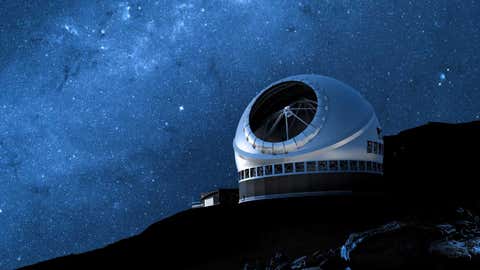India To Help Build World’s Largest Thirty-Metre Telescope

Representational Image
(tmt.org)
We all thought that humanity peaked when we sent the billion-dollar James Webb Space Telescope into space — with our belief only solidifying when the much-vaunted telescope began sending the crispest, most detailed intergalactic images humans had ever clapped eyes on.
And now, word on astronomy street is that another telescope is currently in the works, only this one will be the largest telescope in the world! Dubbed the ‘eye on the universe’, this 2.66 billion dollar-worth thirty-metre telescope (TMT) will be situated in Maunakea, Hawaii.
What makes it extra exciting is that along with the US, Japan, Canada and China, India will also be involved in this project in a big way!
The TMT’s Indian collaborators include the Inter-University Centre for Astronomy and Astrophysics (IUCAA), Pune, the Indian Institute of Astrophysics (IIA), Bengaluru, and the Aryabhatta Research Institute of Observational Sciences (ARIES), Nainital.
Furthermore, over fifty Indian industries will contribute to the venture through different components and the direct or indirect involvement of approximately 200 scientists, engineers, experts and technicians, among others.
“The TMT will enable us to peek from one light year (in our solar system) to the early Universe, or around 13.7 billion light years away. Consider: the nearest neighbour of our Milky Way Galaxy, the Andromeda Galaxy is some 25.3 lakh light years away. So imagine the power and reach of the TMT,” said Prasanna Deshmukh, one of the scientists working on the mega-project.
Deshmukh is the work package manager for TMT’s primary mirror control system and will be responsible for handling the telescope’s crucial actuators and edge sensors.
Meanwhile, the ground-based TMT at a diameter of 30 metres will be much larger than the Hubble Space Telescope (diameter 2.5 m, 535 km above Earth) and the latest James Webb Space Telescope (diameter 6.5 m, and around 15 lakh km away from Earth).
The next generation telescope will open doors to explore the unknown because the current generation devices, which work in optical, ultraviolet or infrared wavelengths, have limited size and resolution.
TMT’s primary mirror will comprise 492 hexagon mirrors that will be supported by another 1,476 actuators, 2,772 high-precision edge sensors, and 10,332 smaller actuators that will align all the mirrors, detect the micro-minutest deviations and correct them to enable clear images from staggering distances in the universe.
Astronomers hope that the TMT would allow them to get a better look at planets, stars, galaxies, exoplanets, nebulas, supernovas and pulsars, and conduct spectroscopy of such heavy objects to study their atmosphere. They even hope to scout for Earth-like planets and determine whether life exists or can thrive elsewhere.
The TMT will most likely be set to peer into the universe by 2032.
**
For weather, science, space, and COVID-19 updates on the go, download The Weather Channel App (on Android and iOS store). It’s free!
Read More: India To Help Build World’s Largest Thirty-Metre Telescope

